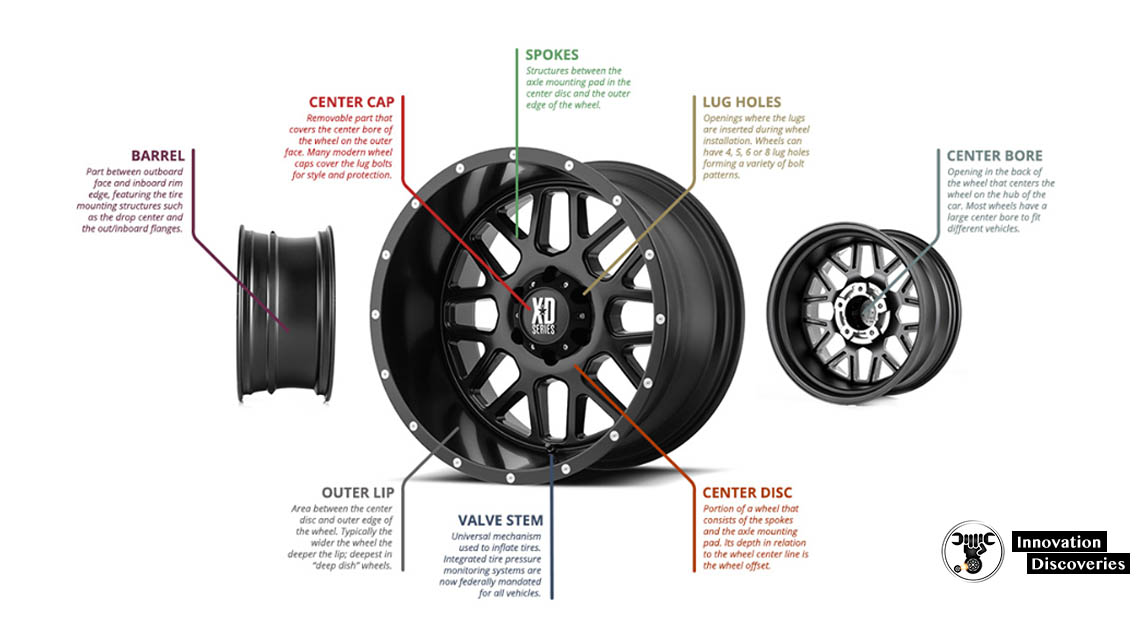
Note – Tyre vs. Tire. For British motorists, the rubber wheel-covering is called a tyre – for the Americans, it’s a tire.
Run Flat Tires
Run-flat tires are tires that can run even after they’ve punctured.
These tires are specifically designed to run for a short duration after it is punctured so that you get enough time to run the vehicle to an auto repair shop.
Run-flat tires are becoming more common in everyday cars. Goodyear started manufacturing run-flat tires for NASCAR cars in 1966.
It was introduced in the mid-1980s specifically for commercial purposes.
As the technology proved its usefulness, most of the standard car models are equipped with such tires.
Run-flat tires can run for about 80 km after it suffers a punctured wound.
This grace period allows the driver to drive the car to his garage or repair shop.
Types of Run Flat Tires:
There are two types of run-flat tires:
- Self-supporting type
- Support ring type
Self Supporting System:
In a self-supporting type, the tire features a reinforced sidewall construction that will continue supporting the wheels in the event of air pressure loss.
This design helps to operate the tires even after the loss of air from the tires for the specified distance.

Support Ring System:
In a support ring system, a ring of hard rubber is provided within the tire to support the weight of the vehicle in the event of air loss.

Tire Pressure Monitoring System (TPMS):
Vehicles employing run-flat tires are installed with a tire pressure monitoring system to monitor pressure losses in the tires.
Drivers might be unaware that their vehicle’s tires are punctured in the case of run-flat tires.
TPMS alerts the driver of any pressure losses in the tires.
Advantages of Run Flat Tires:
1.
We don’t have to change the tires in dangerous situations.
If a tire burst while driving on a highway, we don’t have to stop and change the tires immediately.
An average run-flat tire can run up to 80 km after a tire burst.
2.
It provides better control over the vehicle. In a conventional tire burst, drivers might panic and lose control which can be hazardous.
Disadvantages of Run Flat Tires:
- It is expensive than a normal tire.
- The driving experience is not comfortable. Since run-flat tires are stiff, they tend to provide a harsh ride.
- There is no wide range of specialized tread types in run-flat tires. Tires, especially for an off-road experience, have not been specifically designed.
More Detail

How long can you drive on a punctured run-flat tire?
- Once a run-flat tire suffers a puncture, you can’t keep driving on it forever – usually, you will be able to drive at c.
- 30 mph for another 50 miles – plenty of time to get to your nearest garage.
- The exact range depends on variables like your driving speed, the load of your vehicle, and driving conditions.

Vehicles fitted with Run Flat as ‘Original Equipment’ (OE)
An increasing amount of vehicle manufacturers are opting to fit new cars with run-flat tires – so when you buy, for example, a new BMW 5 series or Mini, it will come with four run-flat tires.
This means that it will not have a spare tire or tire changing equipment included as standard.

Fitting ‘Conventional’ Tyres to a Run Flat Equipped Vehicle
If your car was originally supplied with Run Flat tires, it is possible to change to ‘conventional’ tires.
However, if the vehicle was designed with Run Flat tires in mind, bear in mind you could be left stranded without a spare!
Make sure you also buy a new spare tire and tire changing equipment.

Why change from run-flat to conventional tires?
We are not recommending that you change the type of tire originally supplied your vehicle with.
Changing to standard tires could affect your car’s handling, so you must always consult the manufacturer before making this type of change.
However, some people choose to do this for the following reasons:
- Conventional tires are generally cheaper than run-flat tires and have better availability
- Some drivers find that conventional tires give a smoother, less bumpy ride than run-flat tires
- In line with most leading tire retailers, National will not repair a run-flat tire following a puncture
Fitting Run-Flat to an older vehicle (‘retro fitting’)
If you are considering changing to run-flat tires on a vehicle that previously fitted with ‘normal’ tires, then there are several points to consider:
Tyre Pressure Monitoring System
Run flats must only be installed on a car which has TPMS/tire pressure monitoring system.
TPMS alerts the driver to a puncture, so they are aware that they have a limited time to replace their tire, and so they drive within the limits of their deflated tire (see our section on tire pressure for more detail)
Vehicle Suspension
You should also note that you may need some changes made to your vehicle’s suspension.
Because of their stiffer construction, run-flat tires contribute to a vehicle’s suspension when fitted as original equipment.
Read More:
Read: WHEELS: PARTS, SIZES, BOLT PATTERNS, WHEEL OFFSET, ONE-PIECE VS TWO-PIECE WHEEL AND HOW THEY MADE


Visit Forum
Visit Our Friendly Website







One Comment